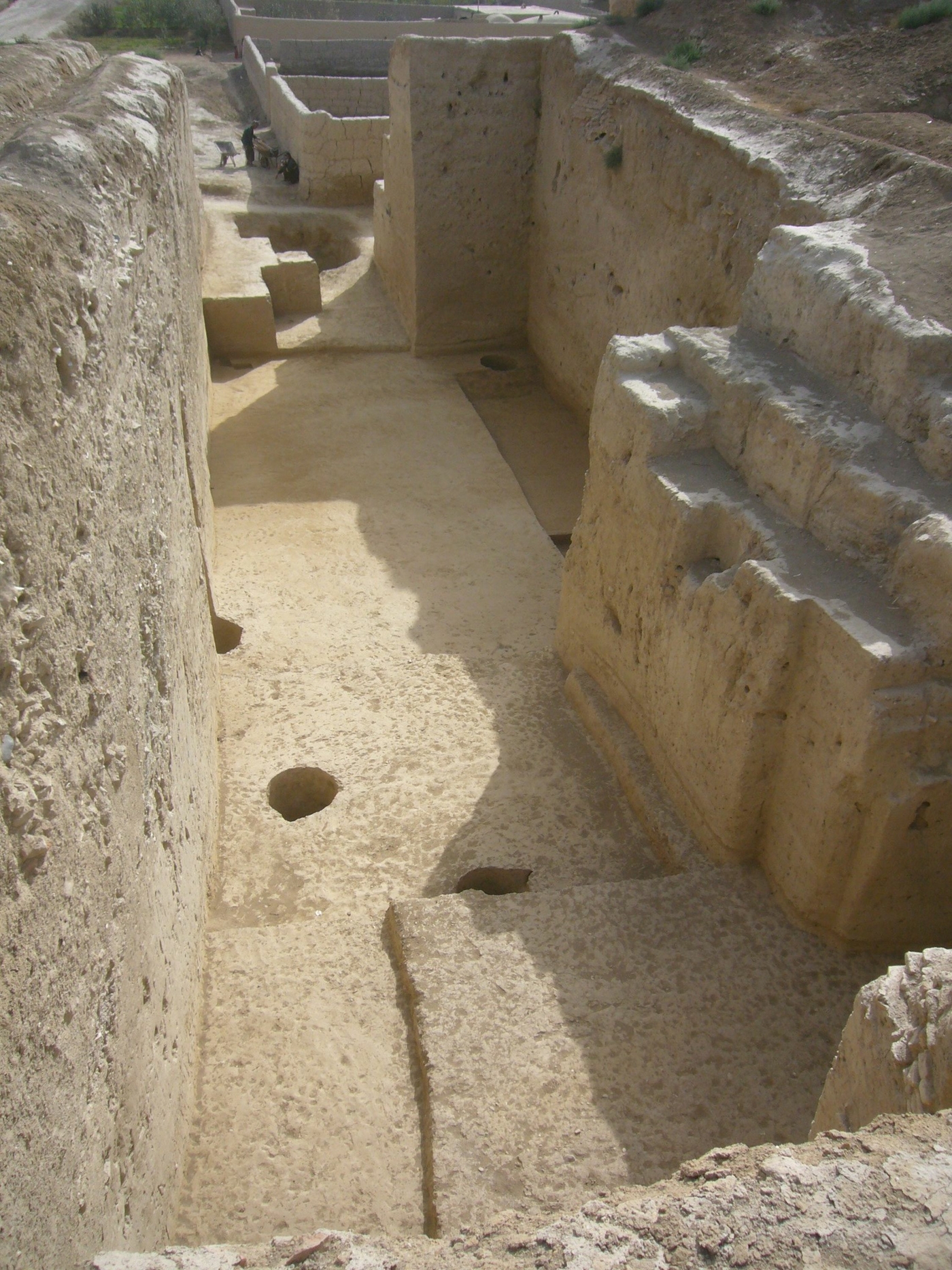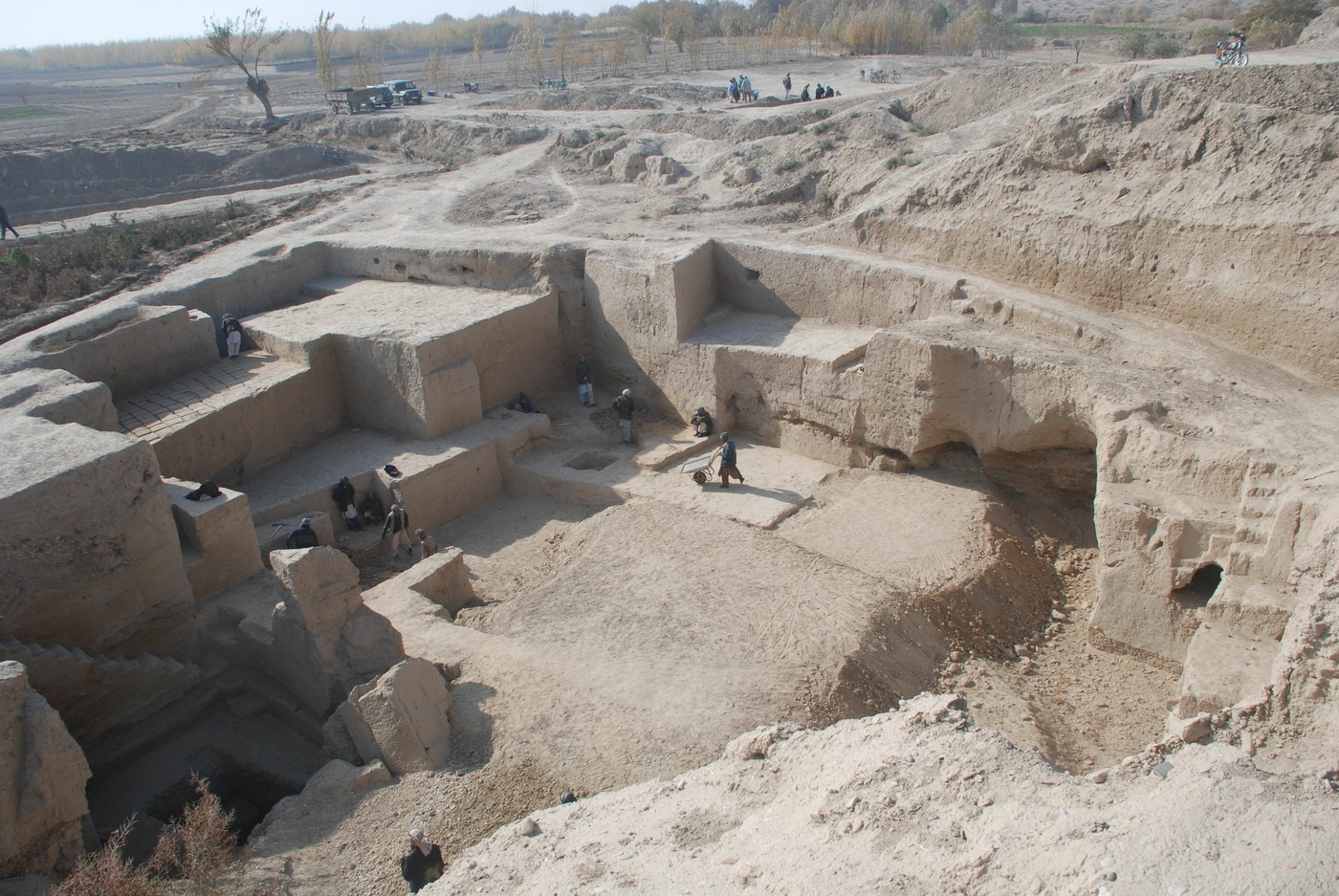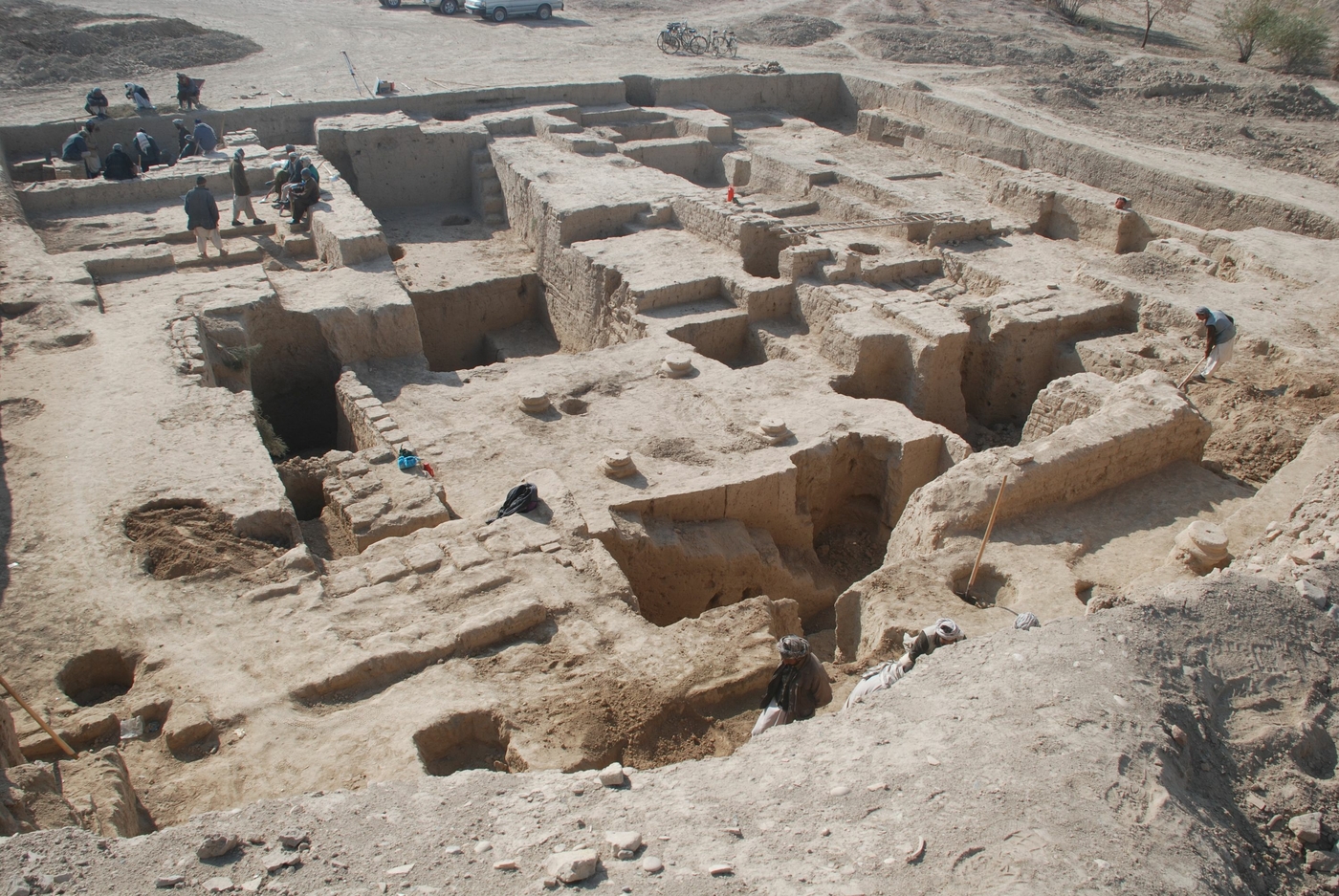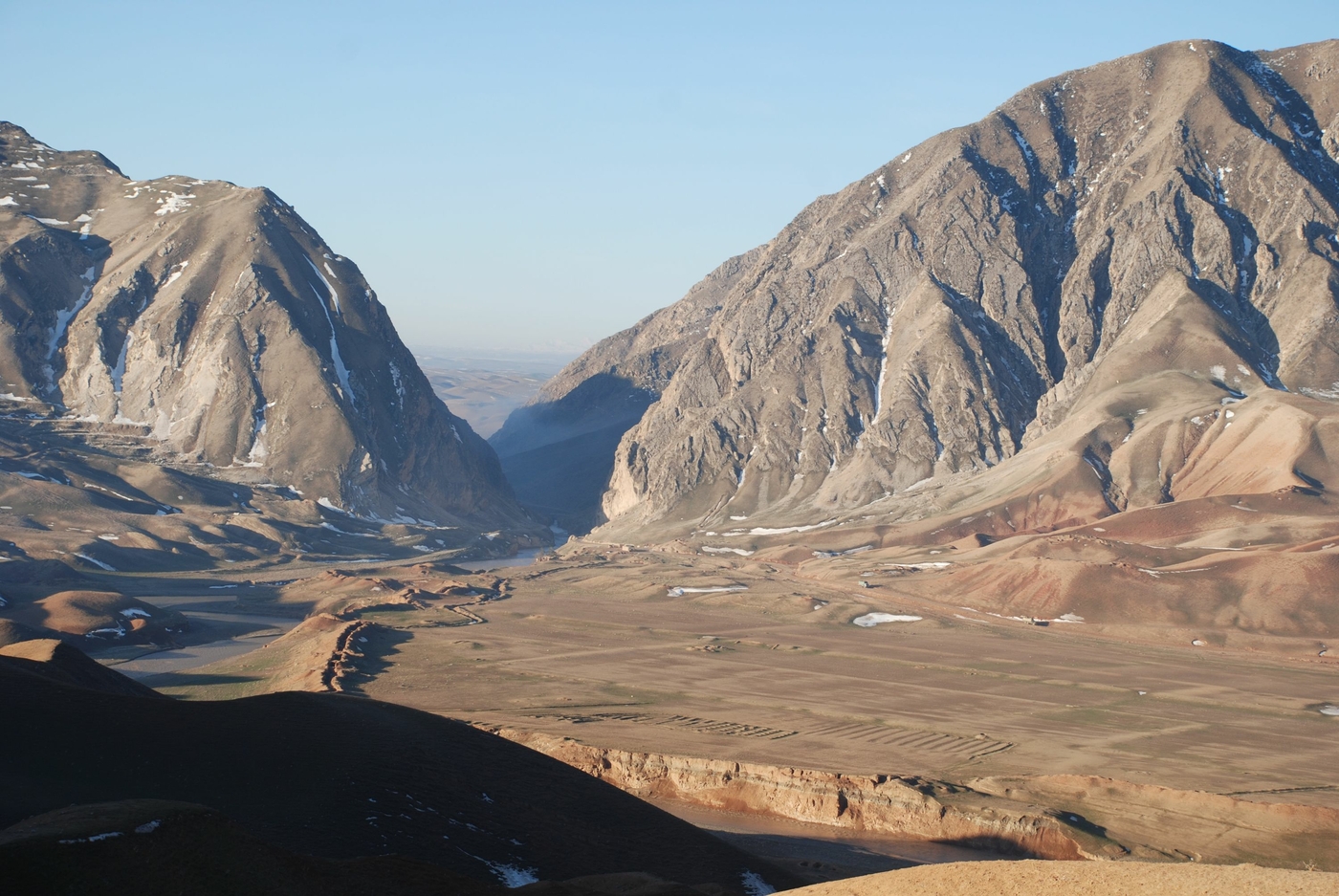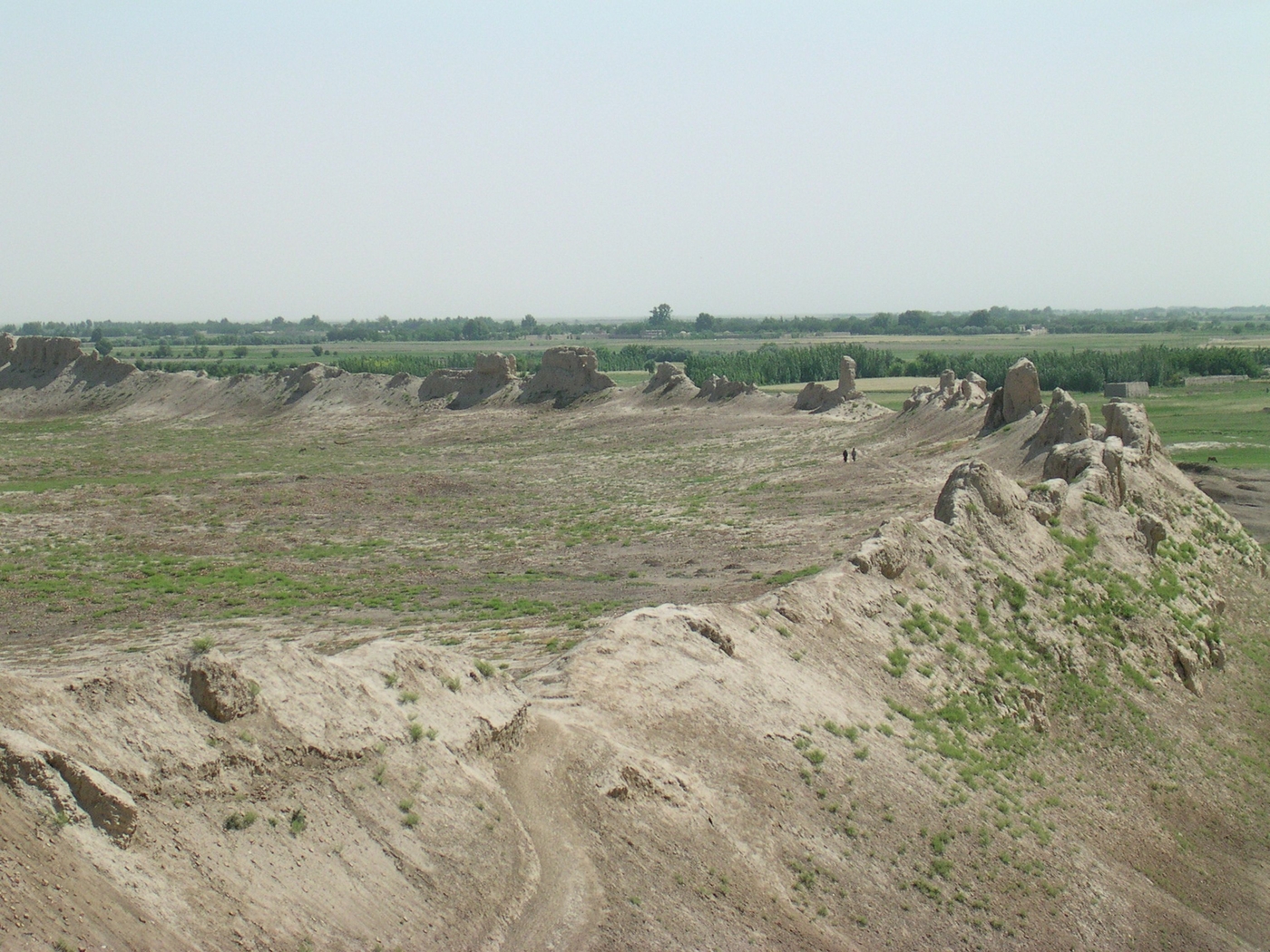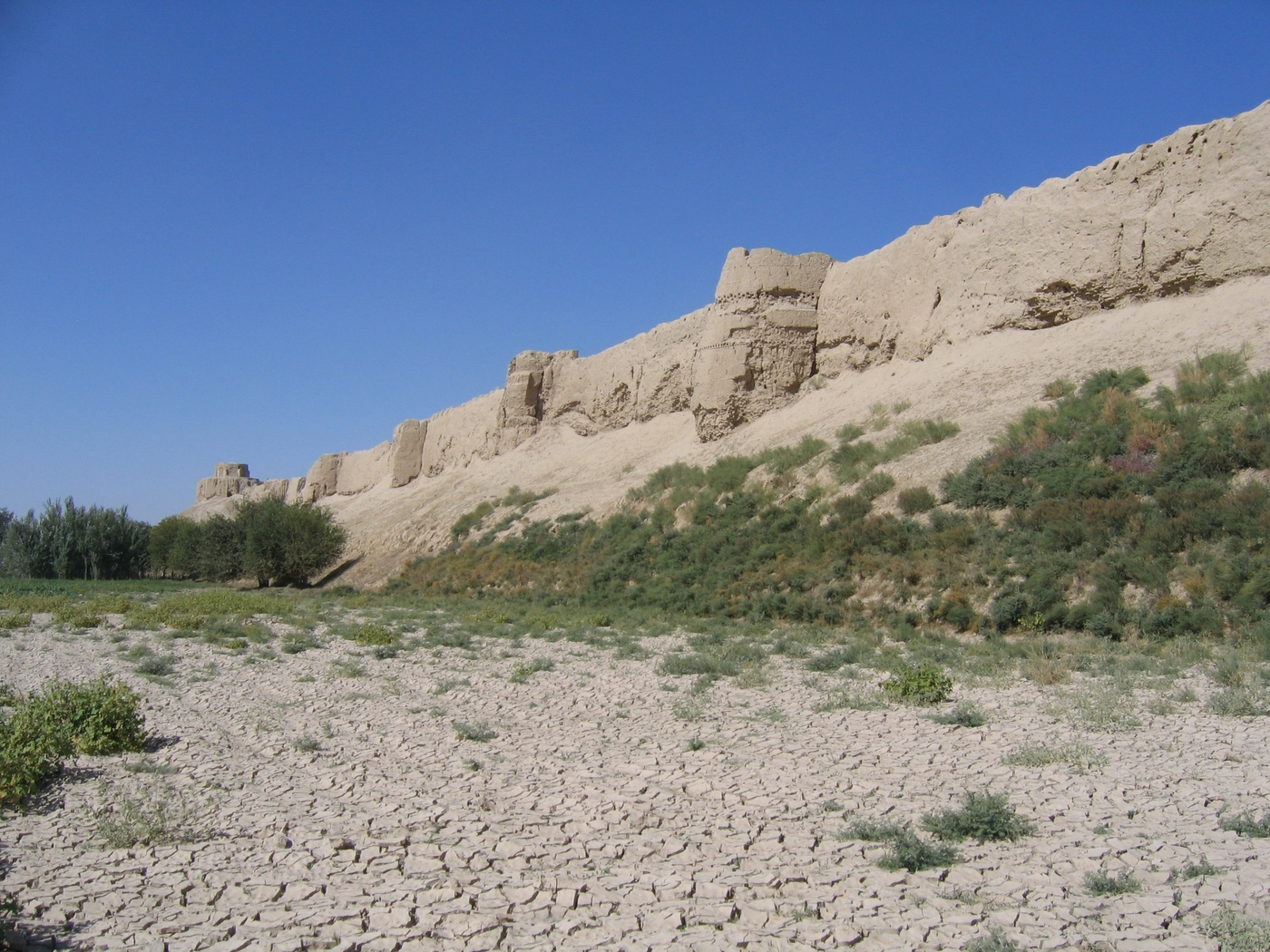Bactra: the mother of all cities
Balkh, ancient Bactra, and its oasis covering an area of almost 16,000 km2, is one of the largest archaeological sites in northern Afghanistan. At risk from looting and the effects of climate change, it has extraordinary potential and should be investigated before it is too late.

An imposing fortress
The ancient city is organised around the Bala Hissar, a fortified enclosure with a sub-circular plan, one kilometre in diameter, dominated by a citadel built in its south-eastern section: the Arg. To the east and west of the central axis through the Bala Hissar, a new rampart was built, encompassing an area of 8 km2, closed to the south by a powerful and extremely well preserved rampart. The southern wall has an average height of 25 metres, a width at the base of 100 metres and a crown, made from unfired clay bricks, strengthened by 18 towers with a circular plan. The other parts of the defensive system were seriously damaged by the extension of the city of Balkh and more intensive crop farming.
This urban site stands at the centre of an oasis covering an area of 16,000 km2, irrigated by 18 canals diverted from the Balkh-Ab: the river of Balkh. It is one of the best preserved oases in Central Asia.
The cradle of Afghan archaeology
The archaeological study of the site began in 1923. It was the first excavation carried out by Alfred Foucher, founder of the Délégation archéologique française en Afghanistan. It continues today, despite the less than ideal security situation. It has therefore been possible to establish an occupation sequence from the Neolithic to the present day.
Most of the remains correspond to the Achaemenid, Kushan and early Islamic occupations. The ancient period, for which a large number of historical sources exist, is attested by monumental architecture and an abundance of pottery.
A major site on the ancient trade route to India
Some 25 km to the south of Balkh, the fortified site of Chashm-e Shafa controlled “the early route to India", from Central Asia to the heart of India. It was built from the Achaemenid period and abandoned in the 13th century, after the Mongol conquest. DAFA was able to investigate the highly complex system of fortifications built in this location and excavated an Achaemenid fire altar.
One of the earliest mosques in Afghanistan
Some 5 km to the south of Balkh, archaeologists continue to excavate the Hadji Piadah/Noh Gombad mosque, one stage of which has been dated to the late 8th CE. Its elaborate stuccoed decoration seems to stylistically belong to a artistic movement that originated locally before spreading throughout the Abbasid Empire, as attested by remains of the same kind found in Samarra (Iraq).
An endangered heritage site
Balkh and its oasis are a remarkable heritage site but also extremely fragile. Looting, urban sprawl, plot restructuring and changes to crop planting pose a direct threat to these archaeological sites and the integrity of the system from which the oasis is formed.


